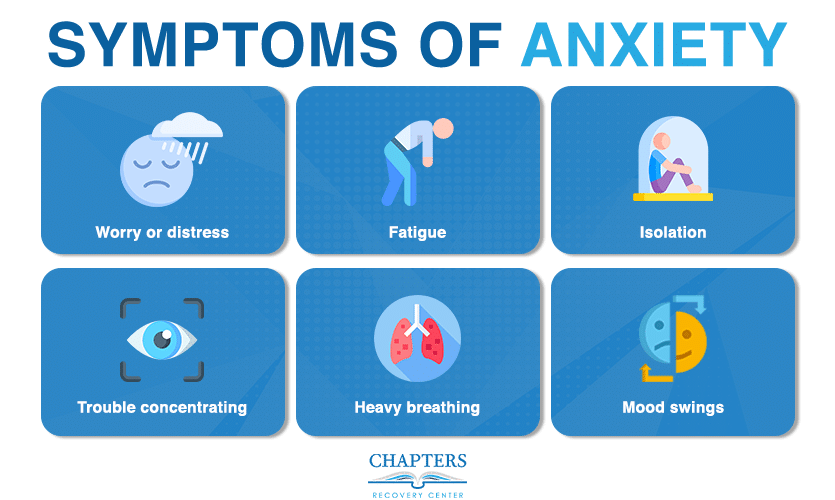Kava Addiction, The Side Effects
Kava, derived from the piper methysticum root, is a popular psychoactive supplement known for its calming and sedative properties. It is often used to alleviate anxiety and insomnia, and has gained substantial popularity, especially in the United States where it is legally available as a dietary supplement. Many people prefer kava for stress reduction and to feel more sociable.
The purpose of this article is to explore the potential dangers of kava addiction and the various risks associated with its side effects. While kava is praised for its benefits, it is important to be aware of the possible negative outcomes in order to use it responsibly.
For those struggling with substance use, resources such as gender-specific rehab or seeking support for parents of addicts can provide valuable assistance during these challenging times.
By understanding these aspects, you will be better equipped to make informed decisions about consuming kava.
Understanding Kava Addiction
Definition of Addiction
Addiction is a chronic disorder characterized by compulsive drug seeking behavior and use, despite harmful consequences. It often leads to changes in the brain, affecting self-control and decision-making.
How Addictive Substances Work in the Brain
Addictive substances typically alter the brain’s reward system by flooding it with dopamine. This neurotransmitter creates feelings of pleasure and reinforces behaviors that are essential for survival. Over time, the brain becomes desensitized to these dopamine surges, requiring more of the substance to achieve the same effect.
Can Kava Lead to Addiction or Substance Abuse Disorders?
While kava is not typically classified as an addictive substance like opioids or benzodiazepines, it can still pose risks. Some individuals may develop a psychological dependence on kava, especially those predisposed to substance abuse disorders. Long-term use can result in tolerance, where increasing amounts of kava are required to achieve the desired effects.
For those seeking help with addiction, specialized programs such as men’s rehab at Chapters Recovery can offer tailored support. Additionally, it’s crucial to consider rehab insurance options through Chapters Recovery to ensure easy access to necessary treatment services.
Exploring Common Side Effects of Kava
Kava, known for its calming effects, can also bring about several side effects that users should be aware of. Understanding these side effects is crucial for making informed decisions about kava consumption.
Common Side Effects and Their Impact on the Body
1. Short-term Effects
- Drowsiness: One of the most common short-term side effects of kava is drowsiness. This sedative effect can be beneficial for those struggling with insomnia but may interfere with daily activities requiring alertness.
- Dizziness: Users often report feeling dizzy after taking kava. This sensation might be mild for some, while others may find it more pronounced, affecting their balance and coordination.
- Headache: While not universal, headaches are another potential short-term effect. These can range from mild to severe and may be exacerbated by other factors such as dehydration or prolonged use.
2. Gastrointestinal Issues
- Nausea: Some individuals experience nausea after consuming kava. This discomfort can deter regular use and may require dosage adjustments or discontinuation.
- Stomach Upset: Kava has been known to cause stomach discomfort in certain users. This includes symptoms like cramping or general unease in the abdominal area.
Addressing Short-Term Side Effects
Managing these side effects involves understanding your body’s response to kava. Start with a low dose to gauge tolerance levels and avoid combining kava with other sedatives or alcohol, which can amplify these effects.
For those dealing with stress or anxiety, incorporating stress management techniques can be beneficial. Resources like Managing Stress in Recovery provide insights into developing a healthy mindset during recovery. Additionally, exploring the role of therapy in substance use recovery can offer a comprehensive understanding of the different therapeutic approaches available.
Risks of Long-Term Misuse or Excessive Consumption
Excessive consumption of kava carries more severe risks, particularly concerning liver health. Heavy use has been linked to liver damage, including potential cirrhosis.
Other long-term health risks include:
- Skin Changes: Prolonged use may lead to a condition called “kava dermopathy,” characterized by dry, scaly skin.
- Nutritional Deficiencies: Regular heavy use might contribute to nutritional deficiencies due to its impact on the digestive system.
While the immediate effects of kava are more noticeable, it’s essential to consider both the short-term and long-term implications on your body when deciding on its use.
Risks of Long-Term Misuse or Excessive Consumption
Heavy kava consumption can have serious health consequences. One of the most concerning issues is the potential for liver damage. Chronic use of kava has been linked to liver toxicity, which may progress to liver cirrhosis in severe cases. This condition involves the scarring and dysfunction of liver tissue, leading to significant health complications and potentially requiring a liver transplant.
Other long-term health risks associated with excessive kava consumption include:
- Dermatological Issues: Chronic users may develop a skin condition known as kava dermopathy, characterized by dry, scaly, and discolored skin.
- Neurological Effects: Prolonged use can lead to cognitive impairments, including memory loss and difficulties with concentration.
- Gastrointestinal Problems: Persistent nausea, vomiting, and gastrointestinal discomfort are common among heavy users.
Understanding and managing these side effects responsibly is crucial for anyone considering regular kava use. Recognizing the potential health risks helps in making informed decisions about consumption practices.
The Controversy: Debunking Myths about Kava
Kava safety concerns often come from several common misconceptions that hide its true safety profile. It’s important to address these myths to have a balanced view.
1. Myth: Kava is inherently addictive
While kava has mind-altering effects, scientific evidence doesn’t show that it’s naturally addictive like benzodiazepines or opioids. It’s mostly individuals with a history of substance abuse disorders who might develop a dependency on it.
2. Myth: Kava always causes liver damage
Not all kava consumption leads to liver problems. The risk of liver damage mostly comes from using poor-quality kava products for a long time. Using kava correctly and getting high-quality kava can greatly reduce this risk.
3. Myth: Kava is unsafe for all users
This general statement ignores individual health conditions and proper dosage instructions. While certain groups (like those with existing liver conditions) should stay away from kava, many people can use it safely as long as they follow the right guidelines.
4. Myth: All side effects are severe
Short-term side effects such as feeling tired, dizzy, or having an upset stomach are usually mild and go away on their own for most users.
By clearing up these myths, you’ll have a better understanding of the real risks and benefits of using kava. This will help you make informed choices about whether or not to consume it.
Interactions with Medications and Other Risks
When looking at how kava interacts with medications, it’s important to know that kava can make the effects of other substances that depress the central nervous system stronger. This includes benzodiazepines, which are often prescribed for anxiety and insomnia. Using kava together with benzodiazepines can increase the sedative effects, causing more drowsiness, dizziness, and potentially risky levels of sedation.
Specific Populations at Risk
Certain groups should be extra careful:
- Pregnant Women: We don’t have enough information about how safe kava is during pregnancy. We need to carefully think about the possible risks to the baby’s development.
- Individuals with Liver Disease: Since heavy use of kava has been linked to liver damage, people who already have liver problems are more likely to experience severe negative effects.
The safety of kava depends on things like where it comes from and how it’s made. It’s really important for users to know about these things and talk to healthcare professionals if they’re taking kava along with other medications or if they’re in one of the higher-risk groups.
Seeking Help: Treatment Options for Kava Addiction
Addressing kava addiction requires a multifaceted approach tailored to the individual’s needs. Several treatment options for kava addiction are available to help individuals regain control over their lives:
1. Inpatient or Outpatient Therapy
- Depending on the severity of the addiction, inpatient therapy offers a structured environment with 24/7 medical support, while outpatient therapy allows individuals to continue daily activities while receiving treatment.
2. Medically Assisted Detox
- This involves supervised withdrawal from kava under medical guidance to manage symptoms and ensure safety. It is particularly crucial for those experiencing severe withdrawal effects.
3. Cognitive Behavioral Therapy (CBT)
- A widely used method that helps individuals identify and change destructive thought patterns and behaviors associated with kava use. CBT empowers individuals with coping strategies to handle triggers.
4. Rational Emotive Behavior Therapy (REBT)
- Similar to CBT, REBT focuses on altering irrational beliefs that contribute to addictive behaviors. It encourages rational thinking and emotional regulation.
5. Group Therapy
- Provides a supportive community where individuals can share experiences and gain insights from others facing similar challenges. Group settings foster accountability and encouragement.
6. Twelve-Step Programs
- Structured programs like Narcotics Anonymous offer peer support and a step-by-step framework for recovery. These programs emphasize personal responsibility and spiritual growth.
Seeking professional help early can significantly improve outcomes and facilitate long-term recovery. These treatment approaches are designed to address both the physical and psychological aspects of kava addiction, ensuring comprehensive care for those in need.
The Cultural Significance of Kava and Responsible Use
Kava holds a profound cultural significance in the South Pacific islands, deeply embedded in the traditions of Pacific Islander communities and Aboriginal and Torres Strait Islander peoples. This psychoactive root has been used for centuries in ceremonial practices, social gatherings, and as a traditional medicine. In these cultures, kava is revered not only for its calming effects but also as a symbol of peace and community bonding.
Key Cultural Insights:
- Ceremonial Use: Kava ceremonies are integral to many Pacific Islander traditions. These ceremonies often mark important events such as weddings, funerals, and political gatherings.
- Social Bonding: Consuming kava in groups fosters a sense of unity and communal harmony. It is seen as a way to strengthen social ties and resolve conflicts.
- Traditional Medicine: Kava has been traditionally used to treat various ailments, leveraging its sedative and analgesic properties.
While acknowledging these cultural practices, it is essential to promote responsible kava consumption. Emphasizing moderation and awareness of potential risks can help balance the traditional benefits with modern health considerations.
Tips for Responsible Kava Consumption:
- Moderation is Key: Consuming kava responsibly involves understanding its effects on the body and limiting intake to avoid adverse health outcomes.
- Quality Matters: Ensuring the quality of kava by sourcing it from reputable suppliers can mitigate some risks associated with contamination or improper preparation.
Balancing cultural respect with health consciousness ensures that both the heritage and well-being of individuals are preserved.
Current Status: Regulations and Future Implications
Examining Regulatory Measures
Regulations surrounding kava differ greatly depending on the country, indicating varying opinions on its safety and advantages. Here are some examples:
- United States: Kava is legally sold as a dietary supplement. While the Food and Drug Administration (FDA) has cautioned about potential liver damage, it has not implemented an outright ban.
- Australia and New Zealand: Kava is regulated in these countries but can still be used for traditional ceremonies and personal purposes.
Germany’s Ban on Kava
In contrast, Germany has taken a different approach. In 2002, German authorities prohibited the sale of kava due to concerns about its negative effects on the liver. This decision had significant consequences for Pacific Island nations that heavily rely on kava exports. Although certain restrictions have been eased since then, the initial ban highlighted the importance of comprehensive safety evaluations and transparent quality control systems within the kava industry.
Future Implications
The future of kava regulation will likely depend on continuous research into its safety profile and potential therapeutic uses. As scientific knowledge progresses, regulatory frameworks may adapt to address both public health issues and cultural significance as well as meet consumer demand.
Research Spotlight: Investigating the Potential Therapeutic Benefits of Kava
Emerging studies have begun to shed light on the bioactive compounds found in kava, specifically kavalactones. These compounds are primarily responsible for kava’s psychoactive effects and have garnered interest within the scientific community due to their potential therapeutic benefits.
Kavalactones and Cancer Treatment
Researchers have been exploring the chemotherapeutic effects of kavalactones against various cancer cells. Preliminary findings suggest that these compounds may possess properties that inhibit the growth of certain cancerous cells. For instance, laboratory studies indicate that kavalactones can induce apoptosis, or programmed cell death, in cancer cells, which is a critical mechanism for combating tumor growth.
Potential Benefits Under Investigation
- Anti-inflammatory Properties: Kavalactones may help reduce inflammation, which is often linked to cancer progression.
- Antioxidant Effects: These compounds could neutralize free radicals, thereby protecting cells from oxidative stress and potential mutations.
- Cell Cycle Arrest: Some studies suggest that kavalactones might halt the cell cycle in cancer cells, preventing them from proliferating.
Considering these promising findings, ongoing research continues to investigate how kavalactones could be integrated into broader cancer treatment strategies. While it’s still early days in this field of study, the potential for kava as a complementary treatment option remains an exciting prospect for scientists and medical professionals alike.
Are You Or Someone You Love Struggling with Kava?
Understanding the potential risks of kava consumption is crucial for your well-being. The side effects, ranging from short-term issues like dizziness and nausea to severe long-term problems such as liver damage, highlight the need for caution. If you need someone to speak to regarding addiction treatment, contact Chapter’s Recovery Center today!
Prioritize your health:
- Stay informed about kava’s side effects and addiction potential.
- Be vigilant if you or someone you know shows signs of excessive kava usage.
- Seek professional help if kava use becomes problematic.
Remember, while kava can offer relaxation and stress relief, it is essential to use it responsibly. If you suspect a dependency on kava, consider talking to a healthcare provider or exploring treatment options such as therapy or support groups. Your health and safety should always come first.








